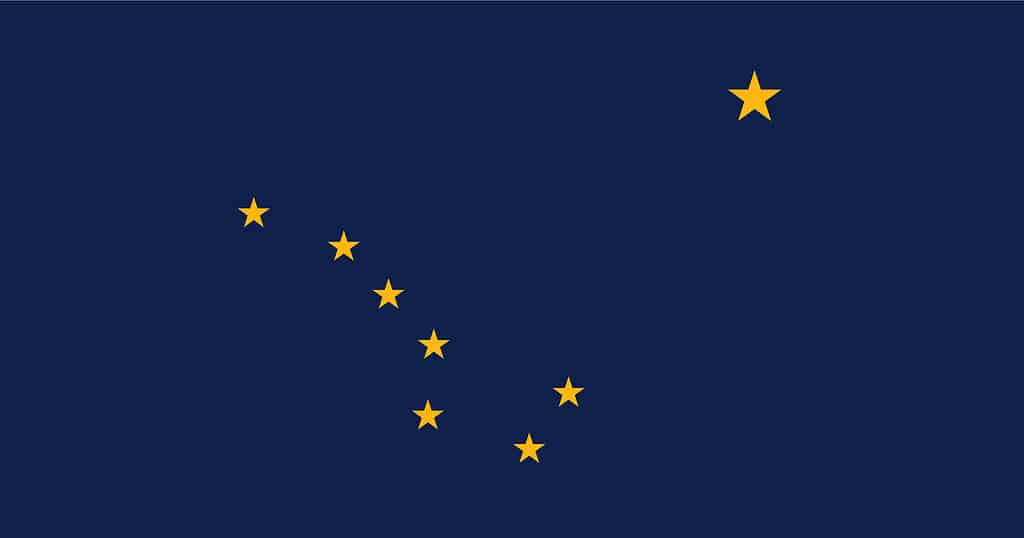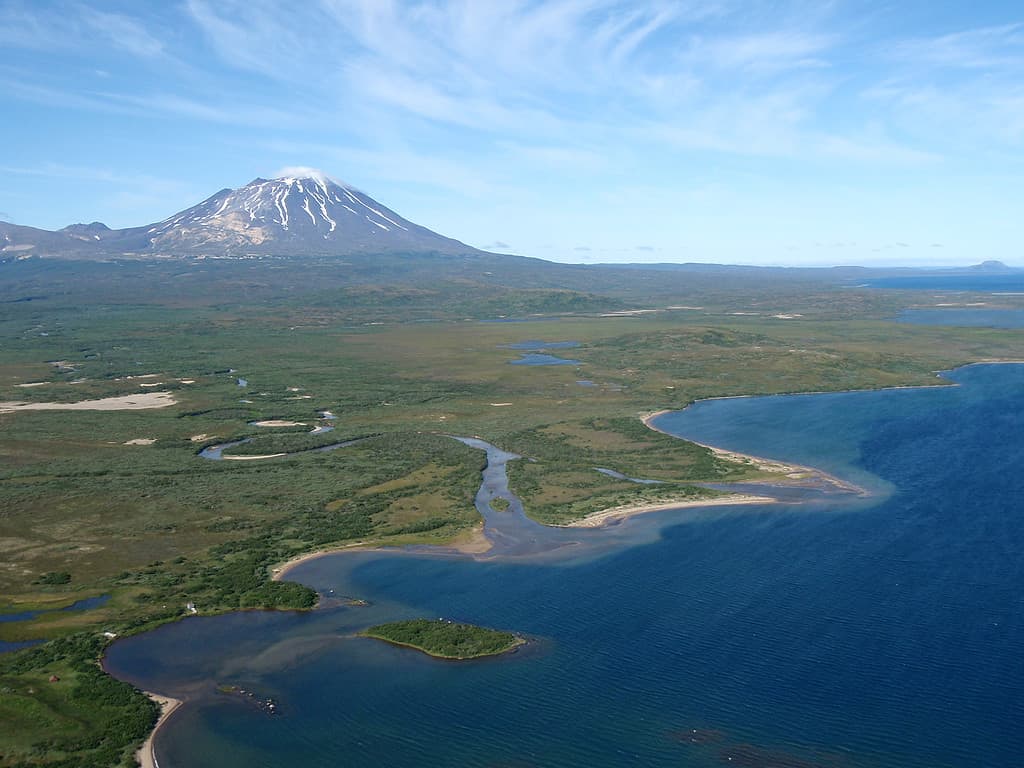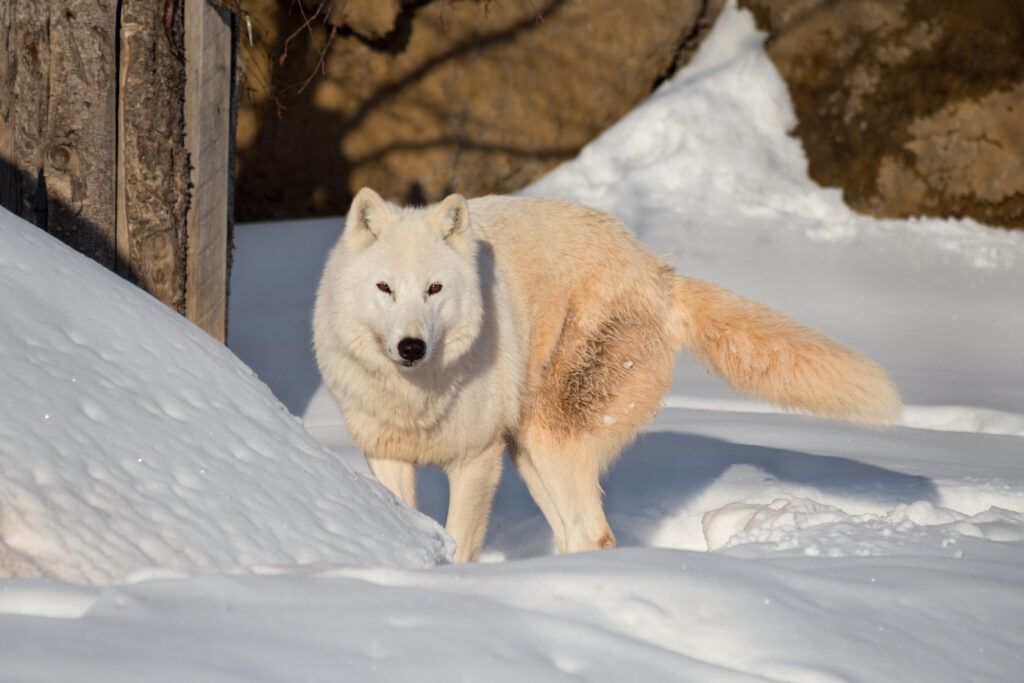Of all the states in the United States, Alaska is known for being the largest in terms of landmass. The state boasts an amazing 663,268 square miles of land and is known for being the seventh biggest sub-national division worldwide. So, how tall is Alaska from north to south?
Alaska has a total distance of 1,420 miles from north to south. Aside from being the longest state from east to west in the United States, it is also the tallest. That is because the state is big enough to have five different time zones.
We know this sounds too good to be true, but it is! Let’s look closer at Alaska’s overall size, width, and length.
Becoming Part of the United States

Alaska was adopted as the 49th state in the United States after Russia sold it for $7.2 million.
©iStock.com/Kamlesh Suthar
Russia originally owned the state of Alaska before it was adopted into the United States as the 49th state. Russia acquired Alaska in hopes of finding more resources and gaining more land. They sent out numerous exploration and settlement teams but didn’t find much besides rural land.
It wasn’t until the Fur Trade in the mid-1600s that Alaska became a place of interest. Many explorers, traders, and hunters wanted to come to the state for its unique northern animals. During this time, settlements, trading posts, and hotels were set up to keep up with the influx of people traveling to the state. Alaska saw an influx of people for the first time, and many visitors were relocating from all over the globe.
In 1859, Russia began to lose interest in Alaska and offered to sell it to the United States. Russia’s reasoning was that they wanted to sell the Alaskan territory to an enemy of Great Britain. In this case, Britain’s greatest enemy during the time was the United States.
During this time, there was a dispute between the United States, the United Kingdom, and Ireland on who owned the territory. Luckily, the dispute was resolved in 1903 by arbitration in Canada. The state of Alaska was then considered a part of the United States but not an official state.
The United States government took Russia up on that offer and decided to purchase the territory on March 30, 1867, for $7.2 million. However, it wasn’t until January 3, 1959, that Alaska became the official 49th state.
Geography of Alaska

Geographically, the state of Alaska has diverse terrain ranging from mountainous to tundra.
©Alaska Region U.S. Fish & Wildlife Service / Flickr – License
Looking at Alaska on the world map, you can see to the north that there is the Arctic Ocean. On the other hand, the Pacific Ocean is in the south. Canada and its border are to the east, and to the west is Russia across from the Bering Strait.
In terms of the environment, Alaska has a very broad range. The state’s northern areas have a lot of flat land and tundra. However, to the south, plenty of mountains and sandy beaches exist. Depending on the region, the environment changes drastically from high-peaked mountains to glaciers, boreal forests, and more.
Alaska is also well known for its mountains, with over 3,844 named ones inside the state. There are approximately 39 mountain ranges located within the state. Out of those mountain ranges, 17 of 20 of the United States’ highest peaks are located there.
The largest mountain is Mount Denali, previously known as Mount McKinley. It is the tallest mountain in North America and is 20,310 feet tall. Travelers worldwide come to see Mount Denali and climb it. Only around 60% of climbers end up reaching the summit.
Another well-known fact is that Alaska has the most glaciers out of any state. More than 100,000 glaciers range from 8 miles long to 126 miles long. The state is home to the largest glacier in the United States and North America, the Bering Glacier.
Lastly, Alaska has more volcanoes than any other state. The state has more than Hawaii due to the constant shifting in the earth’s tectonic plates. The Pacific Plate has been sliding below the North American plate, which produces subduction and volcanoes. Currently, there are over 140 volcanoes and volcanic fields.
The Overall Size of Alaska

Alaska is bigger than Texas, California, and Montana combined.
©DrRandomFactor / CC BY-SA 3.0 – License
The state of Alaska is nearly one-fifth the size of the United States and would rank as the 18th largest nation worldwide if it wasn’t a state. The state is bigger than Texas, California, and Montana combined. It spans over 360,000,000 acres and is almost the size of some European countries.
The size of the state is equivalent to 17% of the land in the entire United States. In addition to that, it’s 3.1 times wider than Texas from east to west and 1.9 times taller from north to south. It’s bigger than three of the biggest states in the United States combined.
The state of Alaska spans 1,420 miles from north to south. On the other hand, it spans 2,400 miles from east to west. The smallest area from north to south is from the southcentral region until the far north. Point Barrow and Amatignak Island are the state’s tallest points from north to south.
There are 6,640 miles of coastline, much of which are from the Aluetian Chains. Tidal shorelines also account for approximately 47,300 miles. The smallest width in Alaska is the Bering Straight, which is 51 miles, with the widest being 2,700 miles from southeast to southwest.
Regarding the state’s borders, Alaska also has a significant one. To the east, Alaska has the Canadian border, which spans nearly 1,538 miles long. It is separated in some areas by the Yukon River Valley and the summit of Mt. St. Elias.
Wildlife in Alaska

Arctic wolves are just one of the rare animals you can see in the state of Alaska.
©Tikhomirov Sergey/Shutterstock.com
Alaska is one of the best places in the United States to see a wide range of wildlife. While Alaska might seem like it only has a few northern animals, that’s untrue. In fact, Alaska has more than 1,100 vertebrate species in all types of terrain across the state. This includes over 112 mammal species, 530 bird species, and 14 whale and porpoise species.
However, it should be known that many of Alaska’s animals are hard to document. Many only thrive during summer months and can be difficult to locate. While scientists do their best, these numbers only estimate how many animals are in the state.
Alaska has such abundant wildlife due to its large landmass and wilderness. Most of Alaska is untouched by humans, which means animal species have more environments to thrive. The state also has some of the largest wilderness areas in the United States, including the Wrangell-Saint Elias and Wood-Tikchik State Park.
Endemic is a fancy term that translates to animals only found in Alaska. Unlike the rest of the United States, Alaska isn’t connected to the lower 48 states by land. So, many of the species are unique only to Alaska.
Some endemic animals include the following:
- Pribilof Island shrew
- Alaskan hare
- Alexander Archipelago wolf
- Kenai Peninsula wolf
- Alaska marmot
Final Thoughts
Alaska is the biggest state in the United States and the widest and tallest. Like the widest points located east to west, Alaska’s tallest points from north to south are mostly contributed by its many islands. Without them, the state would be drastically smaller in terms of measurements. That being said, it’s still by far the biggest state in terms of landmass.
Luckily, the state has the Aleutian Chains to thank for its dominating measurements. However, the state would still triumph over others due to its sheer size. Hopefully, this has helped you learn more about Alaska and the total distance from north to south.
The photo featured at the top of this post is © Naruedom Yaempongsa/Shutterstock.com
Thank you for reading! Have some feedback for us? Contact the AZ Animals editorial team.







